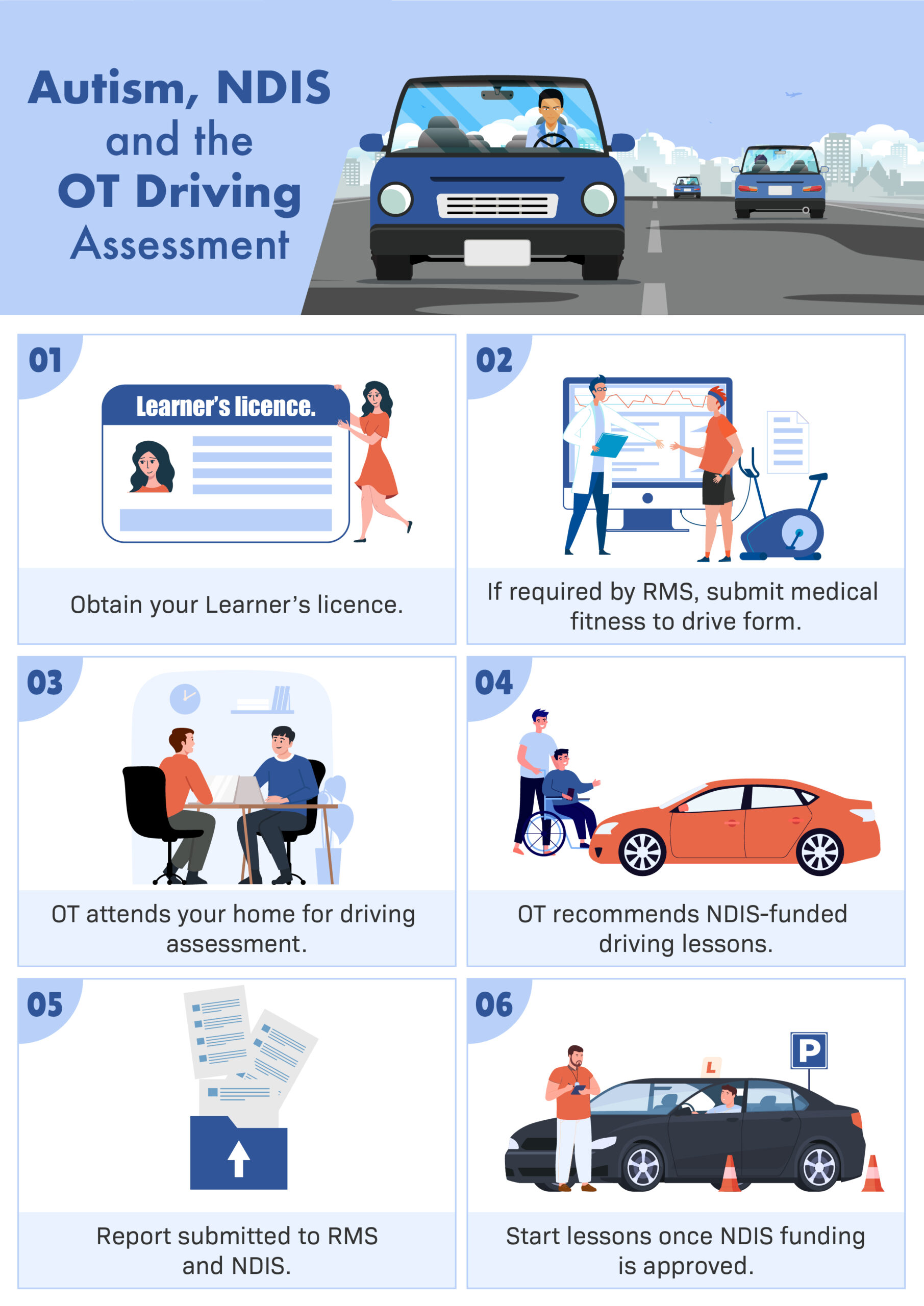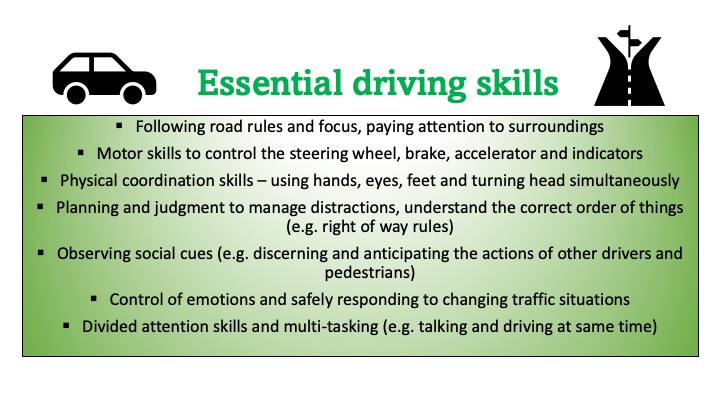Autism
Autism is a lifelong medical condition that is categorized as a developmental disorder. This means that the person generally develops and reaches developmental milestones behind peers of similar age. Autism often impacts how the person understands, engages and interacts with people around them and their environment. The severity and characteristics of the condition varies between individuals, and can often be associated with learning difficulties. People with autism often experience difficulties in areas of social interactions, school or work performance or driving capacity. In Australia, the prevalence of Autism is increasing. The aim of this article is to provide information about the process of obtaining a driver’s licence for people diagnosed with autism.

Driving is an integral part of life that allows us to be more independent, free and enables us to participate in various activities within the community. It is also a task that is easy to take for granted and forget the complex set of skills that are required to complete it. To be able to drive safely and independently, driving requires coordination of visual, cognitive and physical skills and abilities. Autism is a cognitive disorder that can impact on crucial driving skills such as observation, decision-making, processing speed, divided attention, planning and spatial awareness. As a baseline, research suggests that 3 in 4 teenagers with Autism (who do not have an accompanying intellectual or learning difficulty) will successfully obtain their driver’s licence. However, they will generally take 7-9 months longer than their peers without autism to obtain their licence. Thus, while an autism diagnosis does not mean that the person cannot drive, they often take longer to learn to drive and may need extra supports. The graphic below describes some of the crucial driving skills that may be affected by a diagnosis of autism.
The goal to drive
Once the goal of driving has been established, the first step is declaring to the Road and Maritime Services (RMS) that the person has autism when they attempt their driver knowledge test (learner licence). It is recommended that the person and their family also talk to their doctor about their desire to learn to drive. The doctor will then complete an RMS Medical Fitness to Drive Form and submit this to the RMS. The purpose of the form is to inform the RMS of the person’s medical condition and to notify them of the person’s medical fitness to drive. In general, there are three potential outcomes of the doctor’s assessment for fitness to drive:
- The doctor assess that the person’s driving capacity is not affected by their autism diagnosis and they are safe to learn to drive. The person can then organise driving lessons.
- The doctor is of the opinion that the person’s autism is severely affecting their driving or capacity to learn to drive. In this case, the doctor decides that the person is medically unfit to drive and will recommend that the person’s licence is cancelled.
- The doctor is unsure how autism may be impacting on their driving skills and will recommend the person to undergo an Occupational Therapy (OT) driving assessment.
OT driving assessment
Commonly, as autism can affect people differently and doctors do not actually observe the person driving, they will often refer the person for an OT driving assessment. A driver trained OT is a health professional who has specific qualifications to assess if a person’s medical condition may be affecting their driving capacity, to ensure that they are driving according to RMS standards. The aim of the Occupational Therapy Driving Assessment is to fully determine if or how the diagnosis of Autism affects driving, and outline a specific lesson plan for Learner drivers. As learner drivers are only just learning to drive, it is not possible to fully determine if their autism is influencing their driving ability. Therefore, following the OT driving assessment, specialised driving lessons are usually recommended for the person. Driving lessons are completed with rehabilitation driving instructors, who have a background in health and primarily work with people who have medical conditions. This better equips them to teach people who have Autism and other cognitive or developmental conditions. For people who have appropriate NDIS funding, they may utilise this to pay for the assessment and driving lessons.
Regardless of what option the doctor selects regarding fitness to drive, the first step is to make this important decision a collaborative one that involves the individual, their family and other relevant professionals. As driving is one of the leading causes of death for people in Australia, it is important that all individuals who obtain their driver’s licence are medically fit and suitable to drive.



